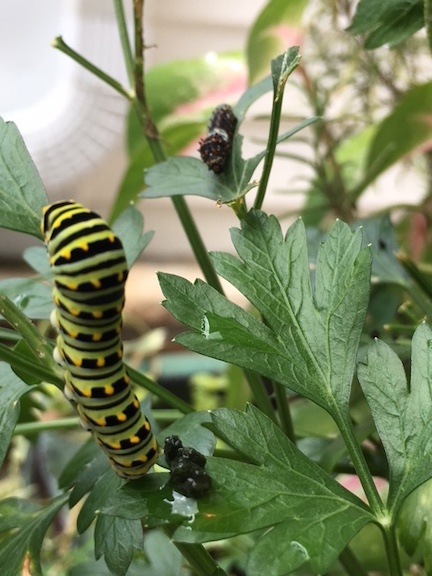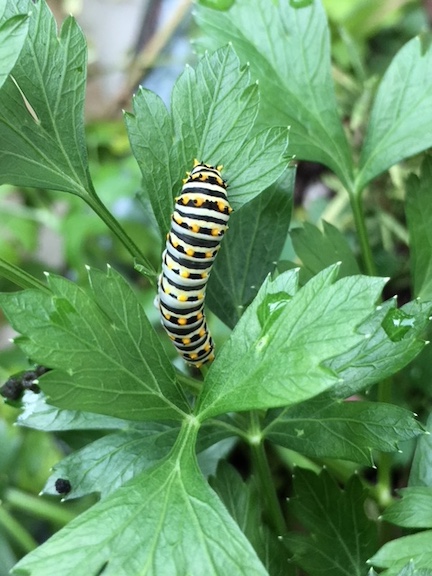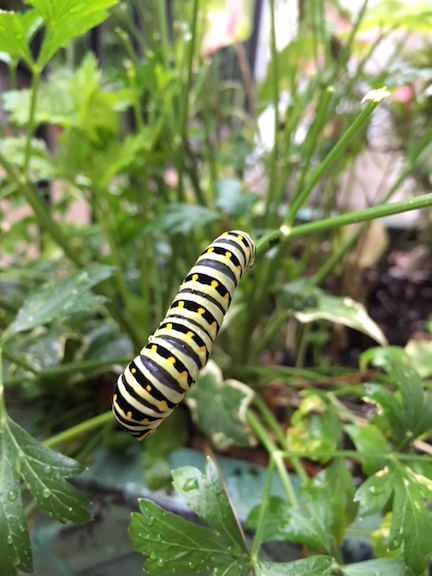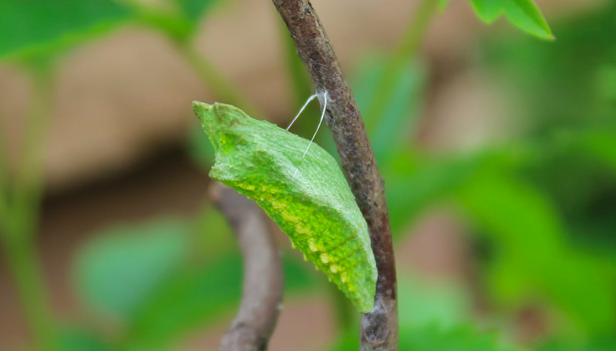Last spring I planted a small parsley plant in a pot right outside the backdoor so it would be handy whenever I wanted a sprig for flavoring or decoration.
Instead, I got magic. Last week, I noticed a small striped caterpillar on one of the leaves. On closer inspection, I found 4 more, all of which were tiny. A quick check helped me to identify them as the larval stage of the black swallowtail butterfly. Two of them were dark with white splotches in the center and I thought maybe they were a different species.

A little more research showed me that the tiny dark larvae were indeed the same species but they were still in their first stages of growth.
If you’ve ever read Eric Carlisle’s book to a child, you already know that caterpillars are VERY hungry creatures. I’ve been watching them every day, fascinated and astounded by their rapid growth.

Caterpillars generally go through 4 or 5 stages, or instars, where they shed their skin, preparing for a larger body. After three days, all of “my caterpillars” had moulted and were the more familiar green and yellow stripes with yellow and orange dots.
Black swallowtail caterpillars look very much like monarch butterfly larvae. The difference is that the monarchs do not have dots – just stripes.

Caterpillars are truly amazing. They have been called “eating machines” for a good reason. Their only function in life is to eat and they increase their body weight thousands of times over. To help them do this their bodies are equipped with an astonishing 4000 muscles! Swallowtail caterpillars prefer to feed on parsley, Queen Anne’s lace, fennel and dill.
Of course, the fatter the caterpillar, the more appealing they look to song birds and other predators. I am hoping that the close proximity to the house will provide some protection for them.

In the meantime, my parsley plant is looking a little……defoliated. But who cares? I can buy a sprig of parsley at the store for 69 cents. But watching magic unfold on my doorstep? Priceless!

